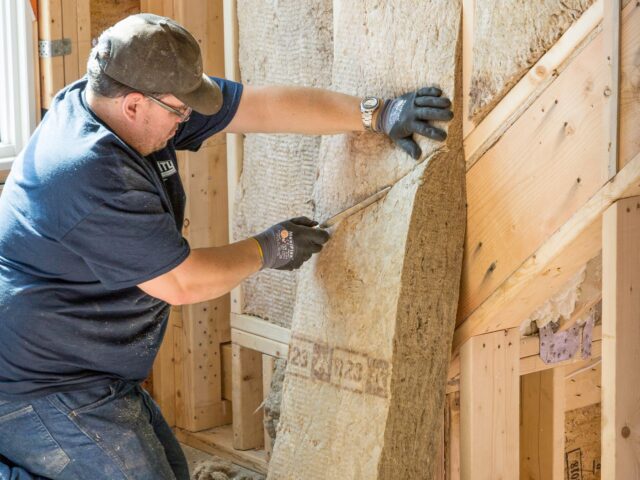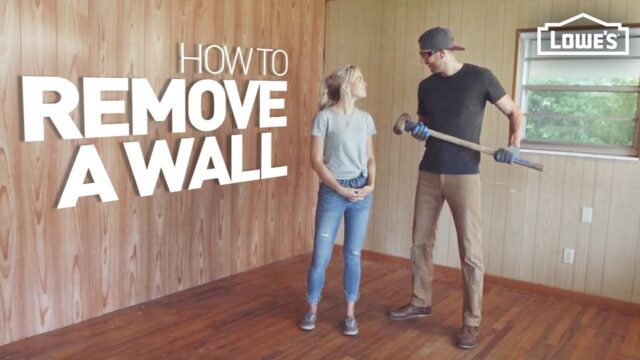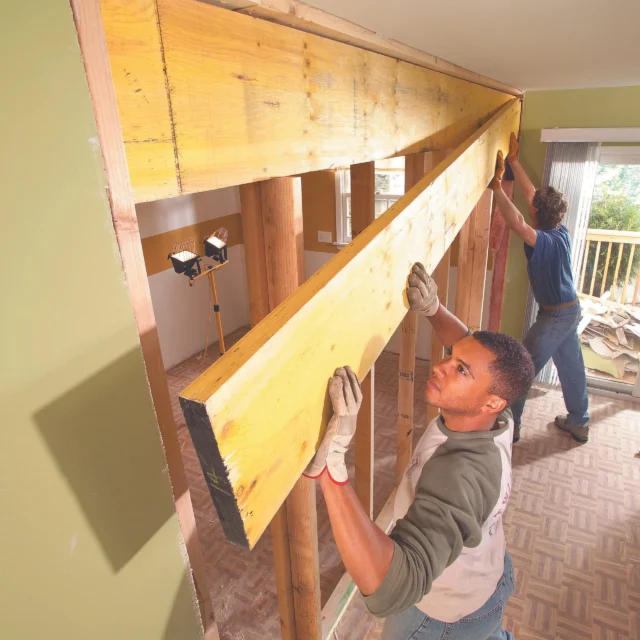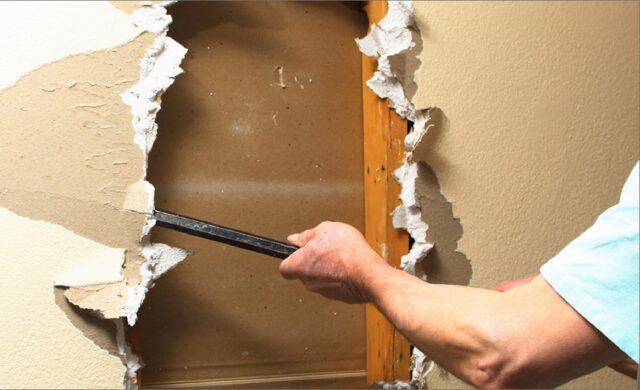
Whether you’re in the middle of a remodel or just trying to open up some space in your home, removing a wall can be an effective solution. But what if you’ve never done it before? Don’t worry – we’ve got a guide that will walk you through the process!
Tools & Materials Needed
Removing a wall requires careful planning and the correct tools in order to achieve a successful outcome. Before beginning work, create a plan for how the remaining structure will look and ensure that there are no electrical or plumbing lines running through the compartment which may cause problems when removed. Additionally, if the wall is load-bearing, special considerations may need to be taken in order to ensure the structural security of your home.
Gather all necessary tools and materials before beginning any steps of the removal process:
- Hammer/sledgehammer
- Pry bar
- Safety glasses/face mask
- Circular saw or jigsaw
- Cordless drill with bits suitable for screws and masonry work
- Materials:
- Protective gloves for hands
- Screws & nails (if applicable)
- Drywall & joint compound (if applicable)
Understanding the Structure
Before you begin your project to open up your home, you must first understand the structure of the wall. Removing it is a major undertaking that requires precision and planning. Different types of walls have different components, and you will need to ascertain what type of wall stands between two rooms in order to create the desired open space.
Some walls are simply made with drywall (also known as sheetrock, Plasterboard, or Gypsum Board). They are relatively simple to remove; however, always pay careful attention when removing sheetrock as they may contain materials like insulation that can create hazardous conditions if not dealt with properly.
Other walls include load-bearing structures, which are typically made with wood studs or gypsum boards sitting atop wood joists. You will need to be especially diligent when evaluating load-bearing walls as they can support loads above them and will require extra reinforcement if removed. Additionally, some masonry or brick enclosures may need extra care if they reach all the way up to the extended roofline or serve as a partition between different levels within your home. Always contact an expert for larger projects such as these that involve masonry/brickwork and heavy loads beyond drywall removal.
Get professional help
If you’re looking to open up your home and create more space, removing a wall is a great option. However, it’s important to hire a professional contractor such as renovlies behang to do the job. They will be able to properly assess the structure and ensure that it can be removed without damaging your home. Once the wall is removed, you’ll have a whole new area to work with!
Preparing the Space
The first thing you need to do is ensure that the wall is not load-bearing. If it is, you will need to consult a structural engineer before continuing.
Once it has been established that the wall is not load-bearing, the next step is to prepare your work area and protect your furniture, floors, and other surfaces from potential damage by covering them with plastic or drop cloths.
- Remember to turn off any power sources in or around this area.
- If necessary, turn off any water sources as well.
- Make sure that any gas lines are capped off securely, and remove pictures and other items from the walls being removed.
- Finally, double-check that your work area is completely clear of anything else that may be in your way while working.
With these preparations complete, you are now safe to begin work on removing your wall!
Removing the Wall
Take extra care when removing walls that contain electrical wiring or plumbing – you’ll certainly want the help of a licensed pro if making those pipelines accessible during demolition. Make sure you turn off the power and turn off any water supply lines before beginning work.
Additionally, keep in mind that walls may contain hazardous materials – lead paint and asbestos are among the most common – and should be handled properly with appropriate protective gear and equipment. To be safe, hire an environmental testing company to test for these materials in your environment before starting work on your project.
Once all of the necessary steps have been taken to ensure safety, and after double-checking regulations for building permits in your local area – here are 4 basic steps for removing a wall:
- Cut through any drywall using either a circular saw or heavy-duty snips for corners;
- Locate studs with either steel screws (for metal frame) or punching stud locations;
- Remove each stud by prying them out of place with caution;
- Finish up by hollowing out any insulation in the wall cavity as needed and remove other debris from the site prior to cleaning up or replace it with other options such as open shelving or doorway arches/columns if desired.
Finishing Touches
Once the barriers are removed, you may need to complete several finishing touches to ensure that your open layout looks attractive. Depending on what materials were used for your walls and how it was installed, there might be some imperfections in the area that need repair.
Cleaning – Use an all-purpose cleaner to remove any dirt or debris left behind during demolition.
Sanding – Smooth out any rough edges with heavy-duty sandpaper.
Painting and Staining – Give your new space an aesthetic appeal by adding a fresh coat of paint or wood stain.
Molding – To give your new space a polished look, be sure to add trim pieces around doors and windows.
Caulking – Seal gaps between moldings, baseboards, and other trims using caulk for a professional finish.
Conclusion
When you’re deciding whether or not to remove a wall to open up your home, consider the function of the space, the construction of the wall and its load-bearing capabilities, and how much time and money you are willing to invest in an undertaking like this. Taking down a wall is not something to be done lightly and can sometimes be difficult. Having a clear plan beforehand will help ensure that your project is successful.
Before starting any demolition in your home, it’s important that you get in touch with a licensed contractor to ensure that all safety precautions are followed. A contractor will also be able to advise you on any zoning regulations or building codes you may need to comply with before beginning demolition. Working with an experienced professional who knows local codes and regulations can help prevent any costly mistakes down the line.












